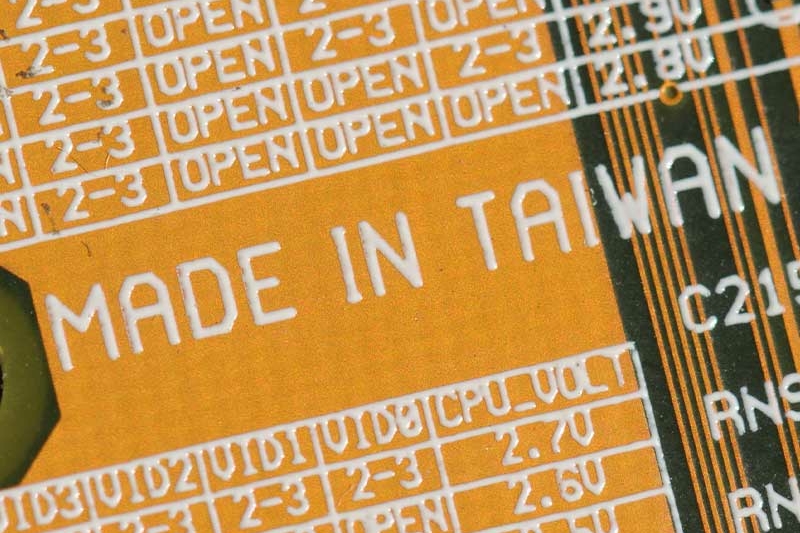Europe again has the technology sector in its target zone
Guidance for Taiwanese companies

2020 witnesses a year filled with significant changes to all of our professional and personal lives.
Businesses and individuals worldwide are witnessing significant geopolitical fractures that have resulted in significant changes to various aspects of the global legal landscape, such as financing, trade, sanctions, foreign direct investment (FDI), intellectual property and antitrust. The COVID-19 pandemic has also negatively affected many aspects of deal-making, with general corporate finance transactional activity levels significantly lower than last year. On the other hand, distressed M&A, restructuring and financing activities are on the upswing, as is the case for investments in sectors that are primed to take center stage in a post-COVID-19 world.
Taiwanese companies and financial institutions are not immune to these global developments. Indeed, Taiwan's unique positioning in the global supply chain and other areas warrants special attention to some of these issues faced by other players globally.
While the COVID-19 pandemic has prevented us from seeing clients in person in Taiwan this year, we continue to focus on the latest legal issues and trends affecting our Taiwanese clients and other contacts globally. Through a series of webinar presentations and online meetings, our objective this year is to deliver to you updates on the following key topics of interest:
We hope this report and our recent webinars are helpful in navigating a swiftly changing landscape.
Guidance for Taiwanese companies

What Quanta Storage and Qualcomm mean for Taiwan's businesses

By Farhad Jalinous and Tilman Kuhn
Already burgeoning, foreign direct investment regulations worldwide are bulking up still more in response to emerging threats

A protective strategy includes understanding new US rules, identifying the risk factors and taking proactive steps to prevent problems

By Bijal Vakil and Henry Huang
Successful defense strategies for Taiwanese businesses

By Alexander McMyn and Eugene Man
What next for Taiwanese banks and businesses?

By Steven Sha and Daniel Yeh
What they mean for investors in the region


What next for Taiwanese banks and businesses?
The COVID-19 pandemic's severe impact on the global economy dominated news headlines through the first half of 2020. Many commentators believe that Asia-Pacific's financial markets–which already started to look overstretched in late 2019 before the pandemic began–are due for a prolonged, painful downturn.
In fact, syndicated lending in much of Asia-Pacific declined precipitously in 2020, as most nations struggle to recover from the pandemic. Many banks currently focus on preserving capital and supporting their clients with cash accumulation, bridge financing and supply chain assistance, leaving reduced appetite for new corporate loan transactions. Debt repayment and refinancing continue to serve as primary drivers of lending activity, while major M&A lending markets, such as Taiwan, suffer significant declines. At the same time, there are areas of resilience, assisted to a degree by changing foreign direct investment (FDI) laws in Southeast Asian countries, which may succeed in attracting increased FDI.
This article considers the current position of Asia-Pacific lending markets and offers insights for Taiwanese businesses on where regional credit activity may focus in the coming months.
The Asia-Pacific loan market suffered significant disruption during the first half of 2020 and beyond. One example showing the depth of this downturn is the Hong Kong syndication market's 75 percent decline in the first half of 2020, compared with the same period in 2019.8
Confidence drained away as governments unleashed unprecedented economic stimulus efforts, attempting to shore up regional economies. These efforts, coupled with a number of well-reported adverse events, such as the uncovering of commodities finance fraud at Hin Leong in Singapore and the bankruptcy of a number of high profile businesses regionally, depressed lending activity. Asia-Pacific syndication transactional activity for the first half of 2020 dropped 23 percent compared with the same period in 2019–with all key markets quieter (except Australia).9
As markets worsened during 2020, Asia-Pacific banks understandably reduced underwriting capacity and tightened their focus on supporting key clients in their core businesses. This had the ancillary effect of narrowing the purposes of completed transactions. Recent bank lending transactions in Asia-Pacific primarily include refinancings, new facilities made available to assist borrowers in building their cash reserves, and a run of margin calls and covenant resets. All of these are typical of a market encountering difficult conditions.
Corporate finance aside, a number of other key drivers of financing transactions have subsided, putting further downward pressure on deal volume and size.
Most significantly, private equity activity–which has powered finance deals regionally as the size of Asia-Pacific's private equity market blossomed–was already declining before the market experienced any effects of the COVID-19 pandemic. Private equity fundraising in Asia-Pacific was lower in both 2018 and 2019 than in the record 2017.10The contraction was also reflected in a drop in private equity deal volume in 2020.11Together with a decline in the use of leverage, as creditors demonstrated a more conservative perspective, this has reduced opportunities to deploy credit in private equity-driven acquisitions.
While all of the above factors increased downward market pressures, areas of resilience remain.
A number of sectors throughout Asia-Pacific have enjoyed a surge in investor sentiment due to the pandemic. In a recent survey by LEK Consulting, 22 percent of private equity participants responded that healthcare transactions on which they were active in Asia-Pacific during the pandemic had received a "significant positive impact" from the COVID-19 crisis. The outcome was even more strongly positive in relation to deals in the education sector, with 27 percent of respondents seeing benefits from the pandemic.12
These hotspots are too narrow to drive a market-wide recovery by themselves, particularly as other sectors have suffered long-lasting damage from the pandemic and the actions taken in response to it.
However, these areas of optimism suggest that some sectors where Asia-Pacific has historically had a strong track record may offer robust performance through the crisis, and that this may drive deal activity for the remainder of 2020 and into 2021.
Future demand for Asia-Pacific lending transactions may also come in the form of pent-up financing needs from private equity firms and other borrowers seeking to deploy leverage on M&A transactions that closed during the first half of 2020, when available debt multiples were reduced or financing was not available.
Recent M&A deals across Asia-Pacific, where the acquirer is Taiwanese, indicate potential opportunities for financing many types of regional M&A activity.
Since Taiwan launched its "Guidelines for the New Southbound Policy," trade with member countries has expanded, and Taiwanese banks have increased their exposure to Southeast Asia. It may well be that the pandemic will offer the chance to make well-priced acquisitions–with the resultant need for financing. The combination of pent up-demand and new opportunities could support the market successfully over the coming term.
In addition, other medium-term and long-term trends may also provide additional support for the loan market, despite the current pandemic. These include the increasing availability of sustainable finance and the broadening context in which it is applied. Recent months have demonstrated a shift within Asia-Pacific from bond capital markets products, which were the genesis of much sustainable finance activity, into other areas of the finance market, including infrastructure finance, subscription lines for funds of a variety of types and corporate finance. As this shift in investor enthusiasm grows, carbon-intensive businesses may need to compete harder for smaller amounts of available financing, potentially pushing them towards more structured solutions than they previously had to contemplate–even if their credit has not deteriorated.
Another driver of financing activity may be reforms in FDI regimes across a number of Asia-Pacific jurisdictions, as countries compete to attract international capital in a post-COVID-19 world. Diplomatic difficulties between long-term trading partners, such as the US and the PRC, could provide new opportunities for Asia-Pacific countries historically considered "second tier" in terms of FDI to garner significant inward investment. Indonesia, Thailand and Vietnam have all announced FDI regulatory reform packages, and they may require material financing to support the resulting investment and trade flows.
Finally, adverse market conditions often result in significant numbers of distressed deals. High levels of government support and the strong financial position of Asia-Pacific banks heading into the crisis have prevented the distressed market from becoming as busy as many commentators predicted in the second quarter of 2020. Still, as government support measures lift and the full extent of economic damage becomes apparent, it is inevitable that businesses will encounter further financial distress.
Distressed deal opportunities, combined with historically high levels of dry powder currently available to corporate investors, could result in significant transactional activity by private equity firms, alternative capital providers and other non-traditional lenders. This could encompass not only distressed M&A activity but also refinancing solutions applied to businesses seen as viable in the long term but likely to encounter significant difficulties during the economic recovery phase.
The scope and depth of Asia-Pacific's recovery will be influenced in large part by how effectively COVID-19 risks are managed by the world's leading economies, which drive much activity in Asia-Pacific. Market observers will look closely at those countries in the coming months.
Nonetheless, despite headwinds from a number of directions and a resulting drop in activity in core areas during the second and third quarters of 2020, several factors indicate that transactional activity may recover in a number of sectors and geographies across Asia-Pacific during the remainder of 2020 and into 2021.
8 https://www.reuters.com/article/apac-first-half-lending-tumbles-to-eight/apac-first-half-lending-tumbles-to-eight-year-low-idUSL4N2E72BI
9 Asia-Pacific (ex Japan) Loans Monthly Report, Debtwire, July 2020
10 Preqin, AVCJ
11 Preqin, AVCJ
12 https://www.consultancy.asia/news/3340/covid-19s-impact-on-ma-and-private-equity-in-southeast-asia
This publication is provided for your convenience and does not constitute legal advice. This publication is protected by copyright.
© 2020 White & Case LLP